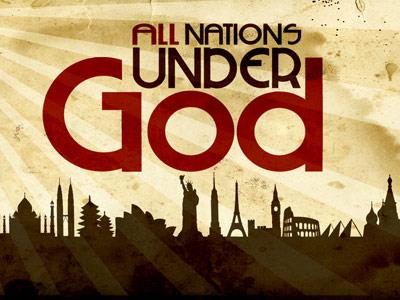-
The Parable Of The Sheep & The Goats: The Final Judgment Series
Contributed by Justin Steckbauer on Aug 8, 2022 (message contributor)
Summary: His German name was Karl der Grosse. At age twenty-nine, he was crowned the ruler of a tiny kingdom in what is now modern-day France. Few people at his coronation thought that King Karl would one day reshape the map of Europe.
“His German name was Karl der Grosse. At age twenty-nine, he was crowned the ruler of a tiny kingdom in what is now modern-day France. Few people at his coronation thought that King Karl would one day reshape the map of Europe.
At the time of Karl’s ascension in 771, Europe was a collection of petty fiefdoms, plagued by superstition and ignorance, poverty and pestilence. Lost in the dark ages.
In this apocalyptic age, Karl rose up to rescue Christendom. By sheer brutality, he dragged Europe out of the Dark Ages. Over the next forty-two years he fought fifty-three wars. When he defeated an army or captured a city, he insisted that everyone convert to Christianity. Those who refused were slaughtered.
By the cross and sword, he carved out an empire that went from the Atlantic to Russia. Then he spent his final years building monasteries and universities, trying to atone for his reign of terror. He died as one of the most powerful men in the world.
Two centuries later, workmen accidentally broke into Karl’s burial crypt under the cathedral in Aachen, Germany. As they peered into the musty darkness, they saw a two-hundred-year-old skeleton encased in cobwebs and tied to a throne. A crown was perched sideways on a grinning skull.
As the workers inched closer, they saw a table holding a large Bible. The right index finger of the skeleton was resting on a verse in the open book. The workmen called for a priest. Holding a candle close to the Bible, he read the Latin verse of Jesus’ words: “What do you benefit if you gain the whole world but lose your own soul?” (Mark 8:36).
History remembers him by a single name, Charlemagne. Each of us has been shaped by the way he transformed history. Yet as he coughed out his last, he ordered his body to be buried in a way that would give a message: both the great and small will appear equally naked before God to give an account for their lives.” -Robert A. Petterson, The One Year Book of Amazing Stories
Today as we discuss the parables of Jesus, we see a parable that tells us about the great final judgment that every human on planet Earth will participate in, including even the great Charlamagne, and you, and me.
We find this parable in Matthew chapter 25, which shares three different parables all in connection to the return of Jesus Christ. The parable of the ten virgins, the parable of the talents, and the parable of the sheep and the goats, which we’ll be looking at today.
Additionally, in Matthew 24, we see Jesus talking about the end times, so nestled immediately after his talk about the last days and the destruction of the temple, are these 3 parables.
The parable is very simple, yet it’s also quite complex. It’s also exceedingly practical. It’s a parable about sheep and goats. It’s interesting how Jesus taught the crowds who followed him. He taught spiritual truths by referring to normal parts of everyday life. Typically, ancient nations like Israel were designed in a particular way. There were various walled cities, to defend against invading armies. And these walled cities would be surrounded by farmlands and grazing pastures. There was no complicated supply chain to keep everyone supplied. If a city wanted food, it would have to be surrounded by farm lands and flocks and herds. It’s fairly common. If you think about Owosso it’s pretty similar, you have the inner city area, and surrounding the city you see various farm lands.
So what would everyone see and be aware of? Flocks of sheep, goats, farming, planting, and so on. So Jesus taught referencing such things. If Jesus was walking the Earth today, I imagine he would reference things like the internet, cars, colleges, industries, restaurants, and sports teams.
But in any case Jesus teaches here in Matthew 25, verses 31 through 46 about when he returns to Earth. We know that this will happen at some point in the future, though we don’t know exactly when.
So let’s just dive in. It says, “When the Son of Man comes in his glory, and all the angels with him, he will sit on his glorious throne. All the nations will be gathered before him, and he will separate the people one from another as a shepherd separates the sheep from the goats. He will put the sheep on his right and the goats on his left.”
Typically sheep will follow their master, and tend to gather in flocks. Goats are different. They are more independent and more likely to be resistant and go their own way. Jesus uses a simple contrast to help us understand the judgment.
And it continues saying, “34 “Then the King will say to those on his right, ‘Come, you who are blessed by my Father; take your inheritance, the kingdom prepared for you since the creation of the world. 35 For I was hungry and you gave me something to eat, I was thirsty and you gave me something to drink, I was a stranger and you invited me in, 36 I needed clothes and you clothed me, I was sick and you looked after me, I was in prison and you came to visit me.’”

 Sermon Central
Sermon Central



